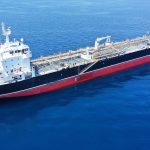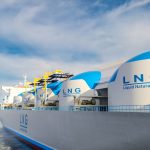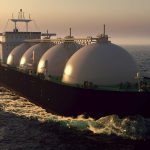

Mastering LNG Vessel Specifications: Size Classifications and Tank Technologies
Introduction
Liquefied Natural Gas (LNG) has dramatically transformed natural gas transportation, becoming a highly efficient and globally traded commodity. By cooling natural gas to -162°C, it is converted to liquid form, reducing its volume by 600 times, thus facilitating efficient maritime transport. This liquid is meticulously transferred to specialized LNG carriers. This guide delves into the size classifications of these vessels, their advanced onboard tank technologies, and the transfer process to these carriers.
Process of Loading LNG to LNG Carriers
- Loading: LNG is typically loaded onto carriers at export terminals through loading arms, ensuring a secure and controlled transfer.
- Storage and Handling: Once aboard, LNG is stored in specially designed tanks that maintain the low temperature needed to keep the gas in a liquid state.
Vessel Size Classification for LNG Carriers
LNG carriers are classified based on their cargo capacity, designed for specific transport needs and routes.
- Small-Scale LNG Carriers:
- Capacity: Typically under 40,000 cubic meters of LNG (approximately 18,000 tons* deadweight), ideal for regional distribution and serving as feeder vessels in smaller ports.
- Medium-Scale LNG Carriers:
- Capacity: Ranging from 40,000 to 80,000 cubic meters of LNG (about 18,000 to 36,000 tons* deadweight), offering a balance of capacity and flexibility for various port sizes.
- Large-Scale LNG Carriers (Q-max or Q-flex ships):
- Capacity: Exceeding 120,000 cubic meters of LNG (approximately 54,000 tons* deadweight and above), these vessels are crucial for long-haul transportation of large LNG volumes.
*Note: Every cubic meter of LNG is equivalent to about 0.42 to 0.48 metric tons. In this blog, an average value of 0.45 metric tons is considered for every cubic meter of LNG
LNG Tanks Onboard
The type of LNG tank onboard is crucial for the safety and efficiency of the vessel.
- Membrane Tanks:
- Utilize a thin, flexible membrane, optimizing cargo capacity while minimizing the risk of cargo movement.
- Moss Rosenberg Tanks:
- These spherical tanks offer robust safety features and are easy to identify due to their unique shape.
- Prismatic Tanks:
- With a shape akin to conventional cargo holds, these tanks efficiently use space while maintaining safety standards.
Chartering LNG Vessels
Chartering an LNG vessel involves several considerations:
- Cargo Volume and Route: Assess to choose the appropriate vessel size.
- Tank Type: Select based on cargo and journey requirements.
- Safety and Compliance: Ensure adherence to safety protocols and regulations.
For more information on chartering LNG vessels, visit Chartership, offering a diverse range of LNG carrier charter options.
Conclusion
Understanding LNG vessel specifications, including size and tank technology, is essential in the energy and maritime sectors. The increasing role of LNG in global energy underscores the need for efficient and safe transportation. Chartership.com provides valuable resources for efficient and safe chartering of LNG vessels.
Related posts


LNG Tanker Valuation: What Influences the Sale Price?

Buy and Sell Offshore Vessels






